Here is
the Documentation for the Letter
to
President Barack Obama
misappropriation . . . . of Alexander the Great: More recently even Alexander’s father, Philip, has also been abducted:
“When Macedonia renamed Skopje airport for Alexander the Great in 2007, this seemed a one-off to annoy Greece. More recently, however, the government has broadened a policy the opposition calls “antiquisation”. The main road to Greece has been renamed for Alexander and the national sports stadium named after his father, and plans are afoot to erect a huge statue of Alexander in central Skopje.”
Even the popular but supposedly serious periodical Archaeology, a publication of the Archaeological Institute of America, has recently (January-February 2009) published an article with the name “Owning Alexander: Modern Macedonia lays its claim to the ancient conqueror’s legacy.”
called Paionia in antiquity: The geographic situation is made clear by Livy’s account of the creation of the Roman province of Macedonia in 146 B.C. (Livy 45.29.7 and 45.29.12). The land north of Mt. Barnous and Mt. Orbelos was inhabited by Paionians. The natural barrier formed by these mountains must be acknowledged. Barnous (modern Voras or Kaimaktsalan) reaches a height of 2524 meters, while Orbelos (the whole range extending to east and west of the Strymon; the western ridge is the modern Beles or Kerkini with a height of 1474 meters) has a maximum height toward the east of 2211 meters.
Strabo (7. frag 4), writing a few years before the birth of Christ, is even more succinct in saying that Paionia was north of Macedonia and the only connection from one to the other was (and is today) through the narrow gorge of the Axios (or Vardar) River.
does not form a line of communication: M. Sivignon, in M. Sakellariou (ed) Macedonia (Athens 1982) 15.
subdued by Philip II: Diodorus Siculus 16.4.2 See also Demosthenes (Olynthian 1.23) who tells us that they were “enslaved” by the Macedonian Philip and clearly, therefore, not Macedonians. Isokrates (5.23) makes the same point.
for at least 2,500 years: See, for example, Herodotus 5.17, 7.128, et alibi.
about a millennium after the death of Alexander: For the first appearance of the Slavs in the Balkans in the mid-6th century after Christ, see Walter Pohl, “Justinian and the Barbarian Kingdoms,” in Michael Maas (ed.), Age of Justinian (Cambridge 2005) 469-471; for their devastating path through Greece in the 580’s, see Anna Avramea, Le Péloponnèse du IVe au VIIIe siècle, changements et persistances (Paris 1997) 67-80
thoroughly and indisputably Greek: In the words of the father of history “I happen to know that [the forefathers of Alexander] are Greek” (Herodotus 5.22). The date of when Alexander I competed at Olympia is not sure, but it certainly occurred between 504 and 496 B.C. He established his Hellenic roots by tracing his ancestors back to Argos and, ultimately to Herakles. Hence the coins with the head of Herakles wearing the skin of the Nemean Lion from Archelaos and Amyntas, among others.
Euripides – who died and was buried in Macedonia: Thucydides apud Pal. Anth. 7.45; Pausanias 1.2.2; Diodorus Siculus 13.103. Some modern scholars doubt this tradition, but not that Euripides spent time in Macedonia.
Philip, won several equestrian victories at Olympia and Delphi: Plutarch, Alexander 3.9 and 4.9; Moralia 105A. Philip advertised his victories, and therefore his Greekness, by minting coins commemorating those victories. Below is a silver coin with the head of Olympian Zeus on the front and Philip’s victorious horse on the reverse, labeled with his name “of Philip” in Greek. A gold coin with the head of Apollo of Delphi on the front, and Philip’s winning two-horse chariot on the reverse, again labeled with his name “of Philip” in Greek.
conduct the Pythian Games: Diodorus Siculus 16.60.2
delegation from Athens: See, inter alios, Demosthenes, De Falsa Legatione, and Aischines, De Legatione. It is the tirades of Demosthenes against Philip (e.g. 9.30-35 in which he calls Philip not only “not a Greek, nor related to a Greek, nor even a barbarian from someplace that can be called good”) that have given rise to the notion that the Macedonians were not Greek, but Demosthenes tended to call all his enemies barbarian, even fellow Athenians (e.g. 21.150).
Another northern Greek, Aristotle: Because Aristotle’s native city, Stageira, was established in the 7th century B.C. before the Macedonians had developed their kingdom, Aristotle cannot be called a native Macedonian, although his father, Nikomachos, was the friend and doctor of Amyntas III (393-369) according to Diogenes Laertius 5.1. Philip later, as a part of his conquest of the whole of the Chalkidike in 348 B.C. (Demosthenes, 19.266) , seems to have laid waste to Stageira, but rebuilt it in 342 B.C. at Aristotle’s request (Diogenes Laertius 5.4). Clearly the relationship between him and Macedonia was close.
tutor of Alexander: Diogenes Laertius 5.4; Plutarch, Alexander 7.2-8.1. Aristotle also taught a number of Alexander’s peers and comrades, some of whom later became kings like Ptolemy of Egypt.
classroom which can still be seen: A spacious room cut back into natural bed rock with cuttings for roof supports and a bench for the students is easily repeopled in the visitor’s imagination with Aristotle standing in the middle and Alexander and his pals on the bench.
It was Aristotle who advised Alexander to “treat the Greeks as if he were their leader, other peoples as if he were their master” (Plutarch, On the Fortune of Alexander 329B). In the event, Alexander did not take this advice for his only wives were non-Greek orientals.
Aristotle’s edition of Homer: Plutarch, Alexander 8.2
founding cities and establishing centers of learning: Although cities like Pergamon and Alexandria in Egypt became major cultural centers under the successors of Alexander (the Attalids and the Ptolemies, respectively), it was Alexander who laid their foundations. See Diodorus Siculus 20.20.1 and Justin 13.2, and Arrian 3.1.5, respectively.
as far away as Afghanistan: Excavations at Ai Khanoum on the northern border of modern Afghanistan have produced great quantities of Greek inscriptions and even the remnants of a philosophical treatise originally on papyrus. One of the most interesting is the base of a dedication by one Klearchos, perhaps the known student of Aristotle, that records his bringing to this new Greek city, Alexandria on the Oxus, the traditional maxims from the shrine of Apollo at Delphi concerning the five ages of man:
- In childhood, seemliness
- In youth, self-control
- In middle age, justice
- In old age, wise council
- In death, painlessness
Klearchos inscription, ca. 300 B.C., now in Kabul Museum
For further information about the Greekness of Ai Khanoum, see Robin Lane Fox, The Search for Alexander (London 1980) 425-433, and figures on pages 390-393, and elsewhere; and Paul Bernard, Les fouilles d’Ai Khanum (Paris 1973).
Slavs and their language were nowhere near Alexander or his homeland until 1000 years later: see above.
The ancient Paionians: The ancient Paionians may have been of Hellenic stock, but relatively little is known about them, partly because “no Paionian Philip ever dominated Greece, and no Paionian Alexander ever conquered the known world” ( Irwin L. Merker, “The Ancient Kingdom of Paionia,” Balkan Studies 6 (1965) 35).
Nonetheless, they appear already in the Trojan War (albeit on the Trojan side; Homer, Iliad 2.848-850, 16.287-291, 17.348-351). Their confrontation with the Persians is recorded by Herodotus (5.1, 12-17). They fought against Philip who subdued them and with Alexander against the Persians, especially in the Battle of Gaugamela in 331 B.C. (Quintus Curtius, History of Alexander 4.9.24-25.
They enjoyed, even under the Macedonians, a certain degree of autonomy as is shown by their negotiations with Athens (IG II2 127) and the many coins minted under a series of Paionian kings, whose names are Greek and inscribed in Greek on the coins. See, for example, the following silver issue of Patraos, probably depicting the slaying of a Persian satrap by the Paionian Ariston as told by Quintus Curtius (see above):
Even more significantly for the assimilation of Paionia into the Greek world are the dedications of statues of Paionian kings made at Delphi and Olympia, and especially the bronze head of a Paionian bison, also at Delphi. See BCH 1950:22, Inschriften von Olympia 303; and Pausanias 10.13.1, respectively.
Greekish: No Paionians are recorded as victors in the Olympic or other Panhellenic games. This may, of course, be a reflection of a lack of athletic ability rather than a lack of Greekness.
territorial aspirations: We would note that in 1929, in an effort to submerge unruly local identities into a unified Yugoslav nation, King Alexander of Yugoslavia named the region the Vardarska province, after the major river that runs through it. See, for example, the Yugoslav stamp of 1939 with the ancient Paionia labeled with the name Vardarska.
This effort to reduce ethnic tensions was rescinded by Tito, who used the “Macedonian” identity as leverage against Yugoslavia’s Greek and Bulgarian neighbors. The (mis)use of the name Macedonia at that time was recognized by the United States State Department in a dispatch of December 26, 1944, by then U.S. Secretary of State Edward Stettinius:
“The Department [of State] has noted with considerable apprehension increasing propaganda rumors and semi-official statements in favor of an autonomous Macedonia, emanating principally from Bulgaria, but also from Yugoslav Partisan and other sources, with the implication that Greek territory would be included in the projected state. This government considers talk of Macedonian ”nation”, Macedonian “Fatherland”, or Macedonian “national consciousness” to be unjustified demagoguery representing no ethnic nor political reality, and sees in its present revival a possible cloak for aggressive intentions against Greece.”
[Source: U.S. State Department, Foreign Relations vol viii,
Washington, D.C., Circular Airgram (868.014/26Dec1944)]
school maps:
This map shows the “real” Macedonia (in Slavic) which includes ancient Paionia, the Greek province of Macedonia (the historical Macedonia), and a part of southwestern Bulgaria (which was also inhabited by Paionian tribes in ancient times).
Other maps, such as this one above in an 8th grade history book in 2005, maintain that, as of 1913 and thereafter, “Macedonia” included parts occupied by Albania (yellow), Bulgaria (purple), and Greece (red).
bank notes:
The White Tower of Thessalonike in Greek Macedonia, fronting onto the Aegean Sea, is the central decoration of this note printed in Skopje in 1991.
mock and provoke its neighbor: An apt analogy is at hand if we imagine a certain large island off the southeast coast of the United States re-naming itself Florida, emblazoning its currency with images of Disney World and distributing maps showing the “Greater Florida”.
characterize such behavior: “’It is nuts,’ sighs one diplomat” (The Economist April 2, 2009).

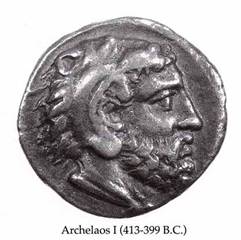
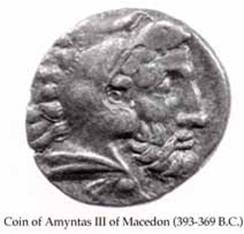
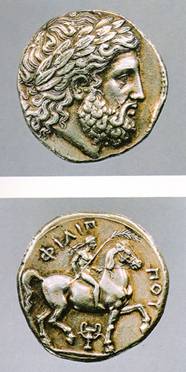
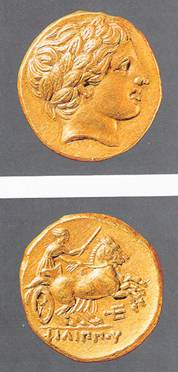
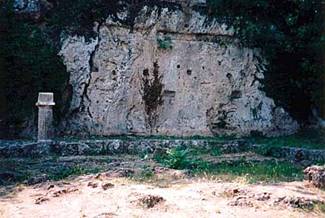
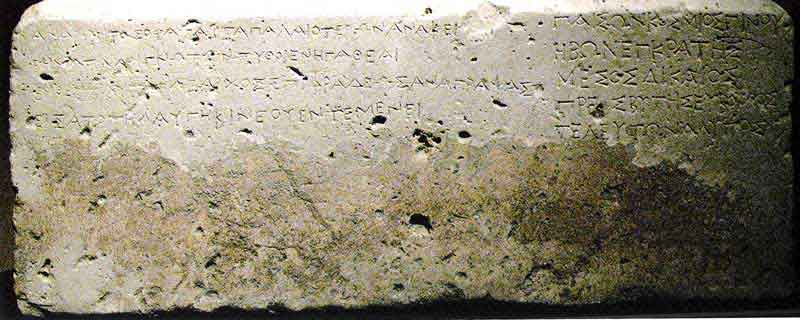
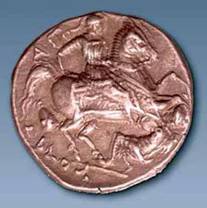
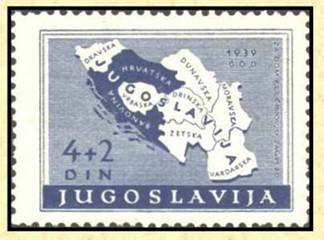

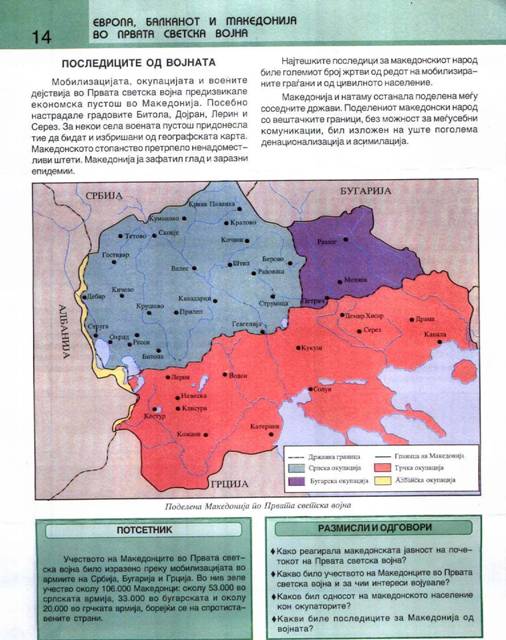

Δεν υπάρχουν σχόλια:
Δημοσίευση σχολίου